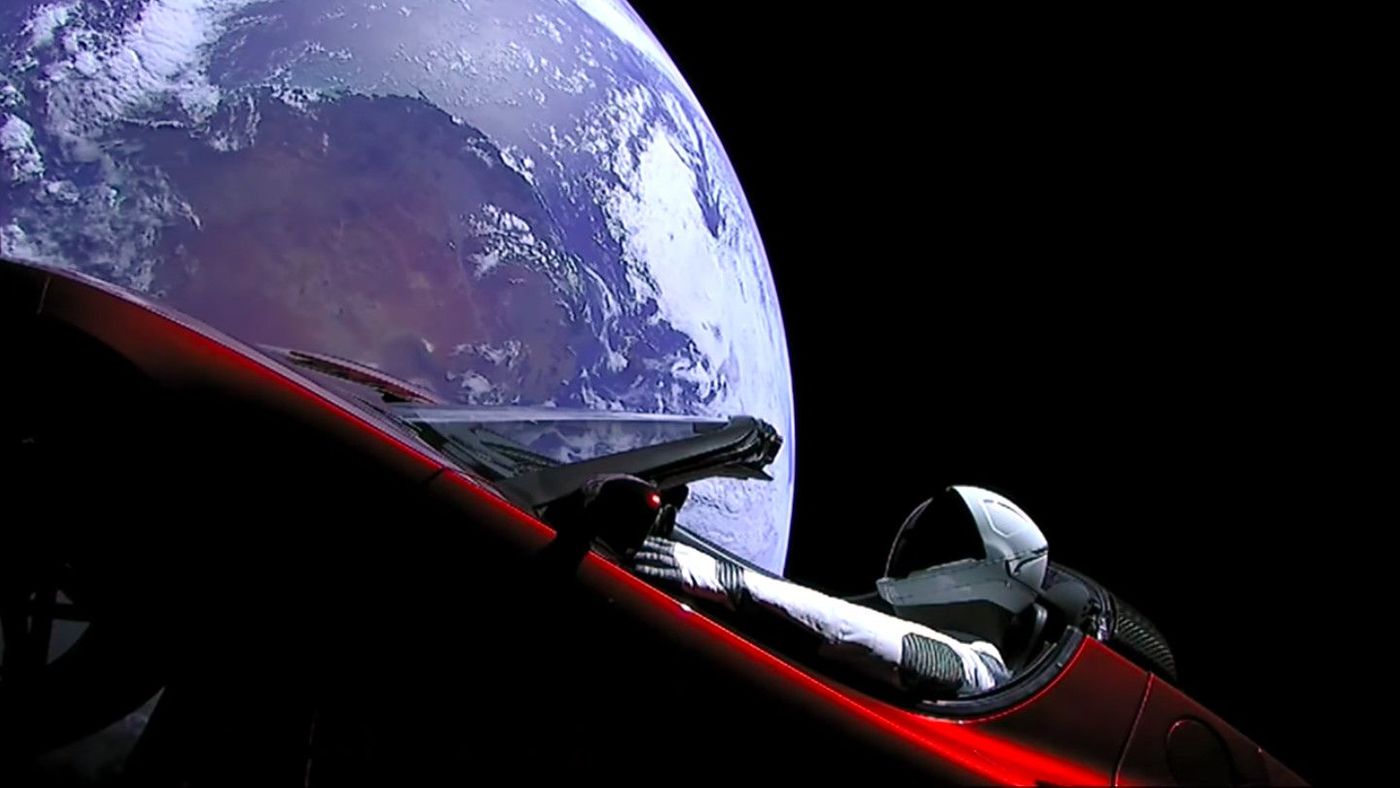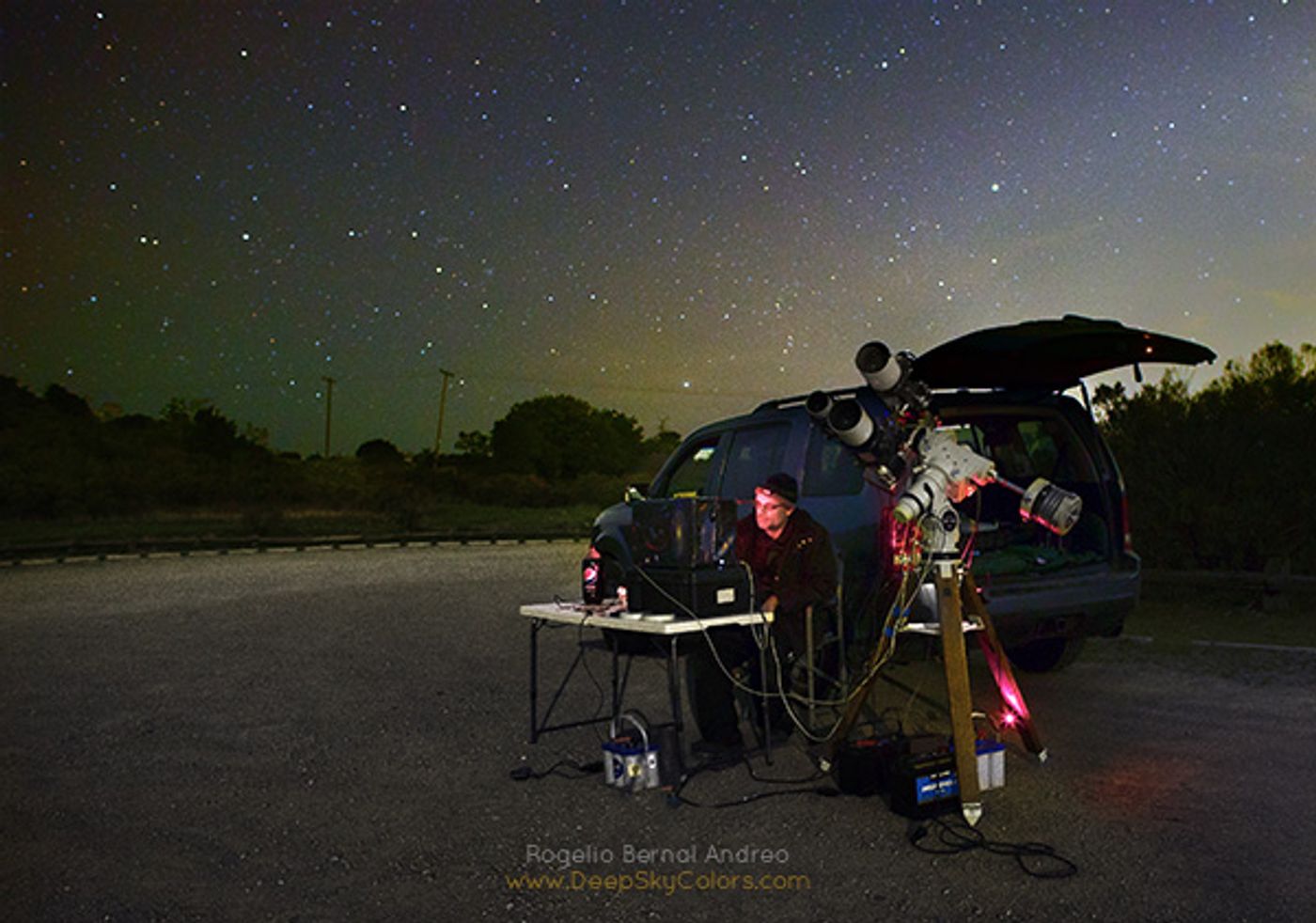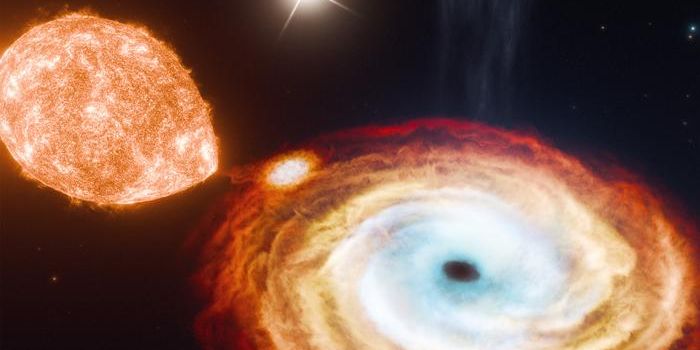Astrophotographer Captures Footage of Elon Musk's Tesla Roadster in Space
While SpaceX set a precedent for space travel when they launched the Falcon Heavy rocket for the first time, we can’t forget about the rocket’s peculiar choice of cargo: Elon Musk’s cherry-red electric sports car: a Tesla Roadster.
Image Credit: SpaceX
Musk’s Tesla Roadster has been floating around in space since its launch on February 6th, and cameras mounted all over the car’s body streamed live footage to the internet. Nevertheless, those vehicle-mounted cameras weren’t enough for famed astrophotographer Rogelio Bernal Andreo.
Andreo wanted to photograph the Tesla Roadster from Earth, so he paid particular attention to ephemerides generated by NASA’s Jet Propulsion Laboratory (JPL). This information would let him discern where and when it would appear in the night sky.
Related: NASA's Hubble Space Telescope grabs a stunning photograph of the Milky Way's center
Despite appearing approximately 20 degrees over the horizon, where atmospheric obstruction would make photography difficult, the Tesla Roadster’s high reflectivity would make it perceptible from the Earth’s surface. Citing Andreo’s blog, the car’s brightness magnitude hovered around 17.5.
After packing his bags and heading for Monte Bello Open Space Preserve, Andreo set up oodles of high-tech photography and space observation equipment to achieve his objective. After hours of recording the night sky during two attempts, Andreo eventually realized his goal.
Image Credit: Rogelio Bernal Andreo/DeepSkyColors.com
Andreo’s footage, embedded below, reveals a bright speck that was moving through the dark sky; that speck is Musk’s Tesla Roadster that rode atop SpaceX’s Falcon Heavy earlier this month:
Andreo is an accomplished astrophotographer. Citing Universe Today, his work has been featured in NASA’s Astronomy Picture of the Day (APOD) dozens of times, so his success in capturing the Tesla Roadster isn’t too surprising.
Nevertheless, it’s mind-boggling to experience the raw footage with your own eyes, especially considering how the car resides a million miles away as of this writing.
If you're interested in astronomy and want to observe the cosmos for yourself, then consider checking out The Ultimate Beginner's Guide to Astronomy.
Source: DeepSkyColors via Rogelio Bernal Andreo, Universe Today










